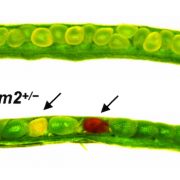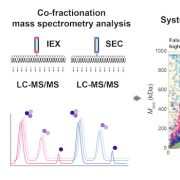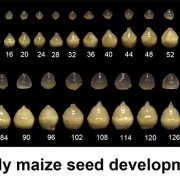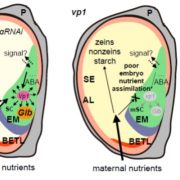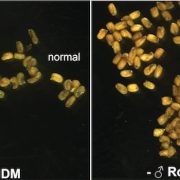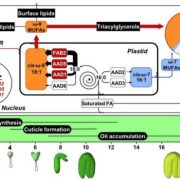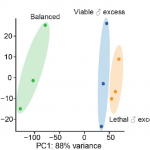New player in plant DNA damage repair and seed development
Diaz et al. characterize NSE4A subunit of SMC5/6 complex and demonstrate that it is important for maintaining genome stability and normal seed development. The Plant Cell (2019). https://doi.org/10.1105/tpc.18.00043
By M. Díaz, P. Pecinkova, A. Nowicka, C. Baroux, T. Sakamoto, P.Y. Gandha, H. Jeřábková, S. Matsunaga, U. Grossniklaus, and A. Pecinka
Background: The nuclear genome is organized into chromosomes, which are dynamically remodelled during cellular activities. The STRUCTURAL MAINTENANCE OF CHROMOSOME (SMC) complexes are key factors establishing and orchestrating chromosome organization. Among the SMC complexes are cohesin (facilitating sister chromatid cohesion), condensin (mediating large-scale chromosome folding), and SMC5/6 (maintaining genome stability). The SMC5/6 complex is composed of eight subunits that form its ring structure and perform specific functions. Existing data show that this SMC5/6 complex has a number of unexpected roles in plants including control of specific developmental processes or suppression of hyper-immune responses.
Question: We wanted to describe functions of two sister genes for NSE4 of Arabidopsis, which remained as the last fully uncharacterized subunit of SMC5/6 complex.
Findings: We found that NSE4A and NSE4B genes originate from a whole-genome duplication about 30 million years ago. NSE4A is expressed in somatic and reproductive tissue and accumulates upon induction of DNA damage. Complete loss of function of NSE4A is lethal, but we found a partial-loss-of-function mutant that is sensitive to specific types of DNA damage. Moreover, the mutant shows poor development of seeds, where the embryo and its surrounding nutritive tissue endosperm stop developing at early stages. By contrast, the function of NSE4B remains unclear because it is expressed only in few tissues and plants lacking a functional NSE4B gene look normal. By genetic modification and expression of NSE4B, we show that it is not efficient in DNA damage repair.
Next steps: How the SMC5/6 complex controls genome stability and affects plant growth is still not understood. We are deciphering this by analysing phenotypes of multiple mutants in the SMC5/6 complex using mixture of genetic, molecular and biochemical methods.
- Díaz, P. Pecinkova, A. Nowicka, C. Baroux, T. Sakamoto, P.Y. Gandha, H. Jeřábková, S. Matsunaga, U. Grossniklaus, and A. Pecinka. (2019). The SMC5/6 complex subunit NSE4A is involved in DNA damage repair and seed development. Plant Cell DOI: https://doi.org/10.1105/tpc.18.00043.
Key words: SMC5/6 complex, DNA damage repair, NSE4, genome integrity, seed development



